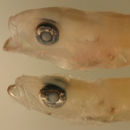Diseases and Parasites
provided by Fishbase
Paracapillaria Infestation 3. Parasitic infestations (protozoa, worms, etc.)
Diseases and Parasites
provided by Fishbase
Tetrameres Infestation. Parasitic infestations (protozoa, worms, etc.)
Migration
provided by Fishbase
Amphidromous. Refers to fishes that regularly migrate between freshwater and the sea (in both directions), but not for the purpose of breeding, as in anadromous and catadromous species. Sub-division of diadromous. Migrations should be cyclical and predictable and cover more than 100 km.Characteristic elements in amphidromy are: reproduction in fresh water, passage to sea by newly hatched larvae, a period of feeding and growing at sea usually a few months long, return to fresh water of well-grown juveniles, a further period of feeding and growing in fresh water, followed by reproduction there (Ref. 82692).
Morphology
provided by Fishbase
Dorsal spines (total): 7; Dorsal soft rays (total): 9; Analspines: 1; Analsoft rays: 9
Trophic Strategy
provided by Fishbase
Strictly carnivorous (Ref. 117791). Also known from brackish canals (Ref. 117792).
Biology
provided by Fishbase
Adults occur in fresh water, often well inland. Found over sand streams, usually in current near cover (Ref. 86798). Inhabits larger free flowing clear water streams (Ref. 11225). They lie mostly on the bottom in slower moving part of streams, sometimes on logs or large stones and on leaf debris or gravel (Ref. 11225). A carnivorous and benthic fish that relies on its sluggish behavior and cryptic coloration (Ref. 36880). Feeds on all greater invertebrates and regularly also fish (Ref. 92840).

